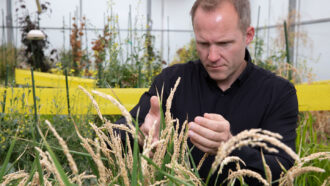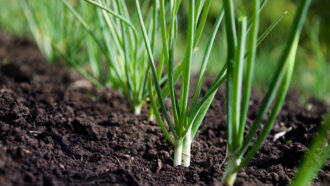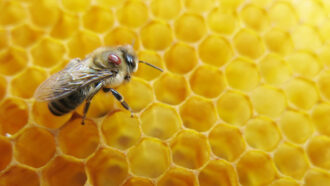Teen develops water-saving pods for seeds
To help farmers use less water, this young researcher developed pods that keep seeds wet

Plants such as corn take a lot of water to grow. A teen developed a capsule that can reduce the amount of water needed to sprout corn seeds.
Songsak Paname/iStockphoto
WASHINGTON, D.C. — Times are dry in California, which is finishing its fifth consecutive year of drought. Cynthia Chen, 14, began to wonder what she could do to help. After doing a little background research, she found out that 80 percent of the water people use in California goes to farming. So Cynthia — now in ninth grade at the Harker School in San Jose, Calif. — decided to attack the problem by building a water-saving seed pod that keeps seeds moist until they sprout.
Her pod and project won her a second place prize in science at the Broadcom MASTERS. MASTERS stands for Math, Applied Science, Technology and Engineering for Rising Stars. This yearly competition — created by Society for Science & the Public and sponsored by the Broadcom Foundation — brings 30 students from around the United States together to show off their award-winning middle-school science fair projects. (Society for Science & the Public also publishes Science News for Students and this blog.)
Cynthia explored potential ways to reduce the amount of water used to grow the fruits and vegetables we eat. She eventually decided to focus on germination. This is the stage of growth in which a seed sprouts into a young plant called a seedling. It’s also a stage that often requires a lot of water — and where, Cynthia notes, a lot of water gets wasted.
“Usually farmers take seeds and they spray them over the land and cover them with soil and then spray water over,” she explains. “The problem with that is that in between the seeds there’s a lot of soil. The water lays on the soil and is unable to reach the seeds. It evaporates, and thus the water is wasted.”

The teen looked for a way to reduce that water waste and designed a pod for a seed. Each seed sits in a bed of soil inside a small cup. The seed and cup then sit inside a larger cup — the used filter from the inside of a single-serving coffee pod. In between the inner cup and the outer cup, Cynthia placed a layer of water crystals — small granules that absorb water and release it over time — to keep the seed inside moist. The whole capsule can break down slowly into the soil over two to three weeks.
To find out if her pod helped seeds to grow with less water, Cynthia purchased kidney bean, corn and squash seeds online. She started with 24 seeds of each type and divided them into three groups of eight. The first group received 5 milliliters (about 0.2 fluid ounces) of water every two days. The second received 10 mL (0.33 fl. oz.) of water per day and the third received 15 mL (0.5 fl. oz.) of water per day. Half the seeds were placed in her homemade pods and the other half in cups of only soil.
Cynthia gave her seeds a few weeks to germinate and grow. Each day, she checked to see how many had gone from seed to sprout. She also counted how many failed to sprout.
She found that her capsule allowed seeds to sprout faster than seeds in only soil. Beans sprouted 1.7 days faster, corn 0.9 day faster and squash 1.4 days faster. “Those one to two days make a huge difference in farming because each day millions and millions of gallons of water are wasted,” Cynthia notes.
Her capsules also saved water. Cynthia found that seeds in pods that got only 5 mL of water grew just as fast as seeds in soil that received 15 mL of water. Her pods helped more seeds germinate, as well. Eighty percent of the seeds in soil alone sprouted compared with 94 percent of seeds in pods.
But germination is only one stage of plant growth. Cynthia says she’d like to see how her pods affect the beans, corn and squash as they grow. But if it works, she would like to continue to use capsules made of used coffee pods. “If we could apply them to agriculture, it could save waste and save water,” she says. “A double benefit!”
Follow Eureka! Lab on Twitter







